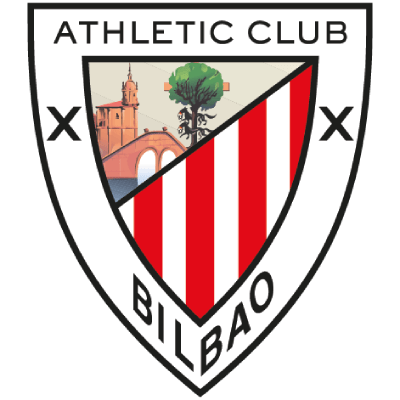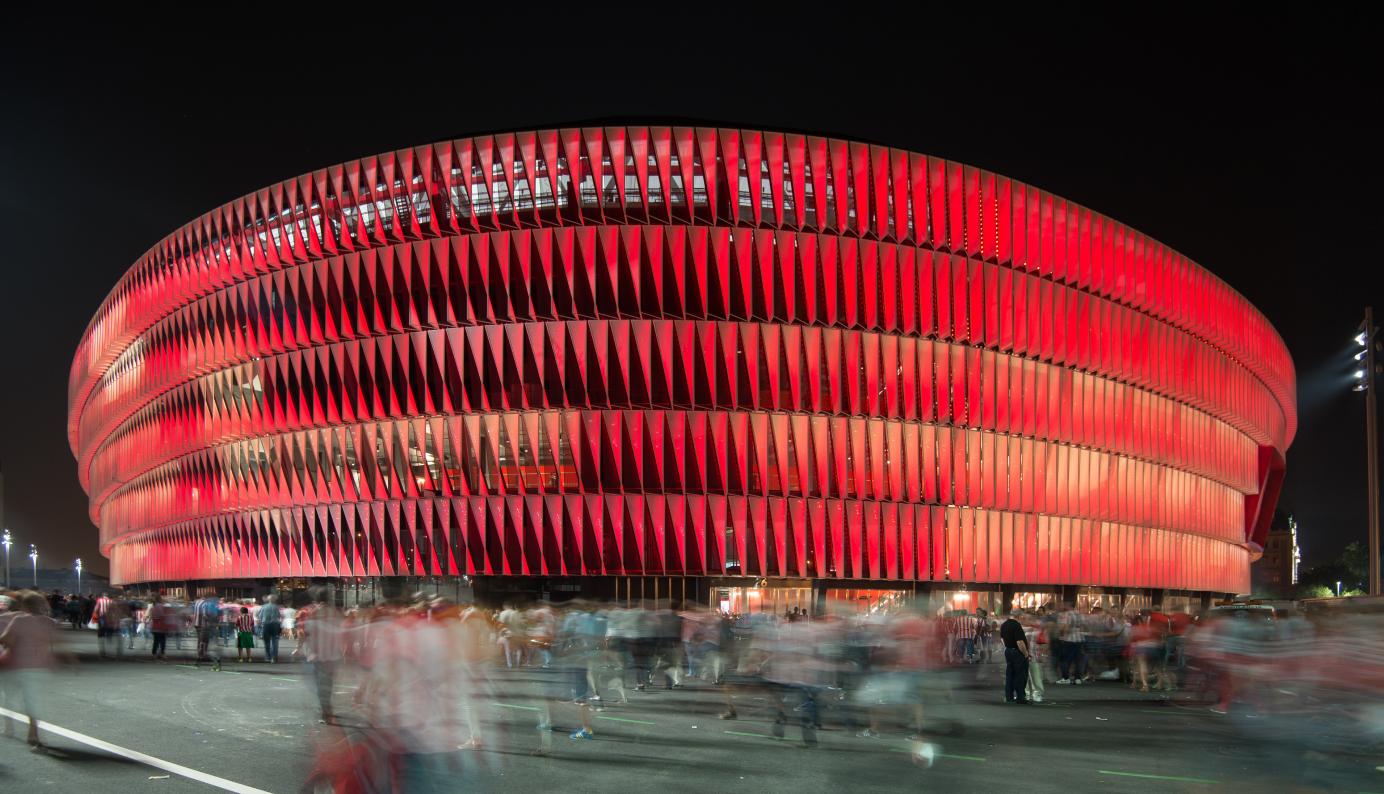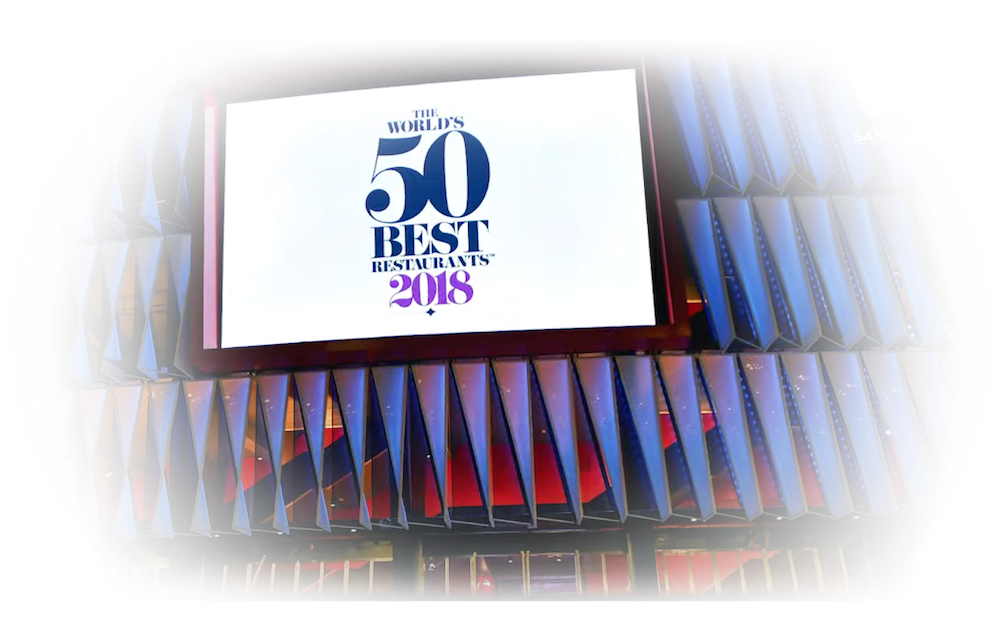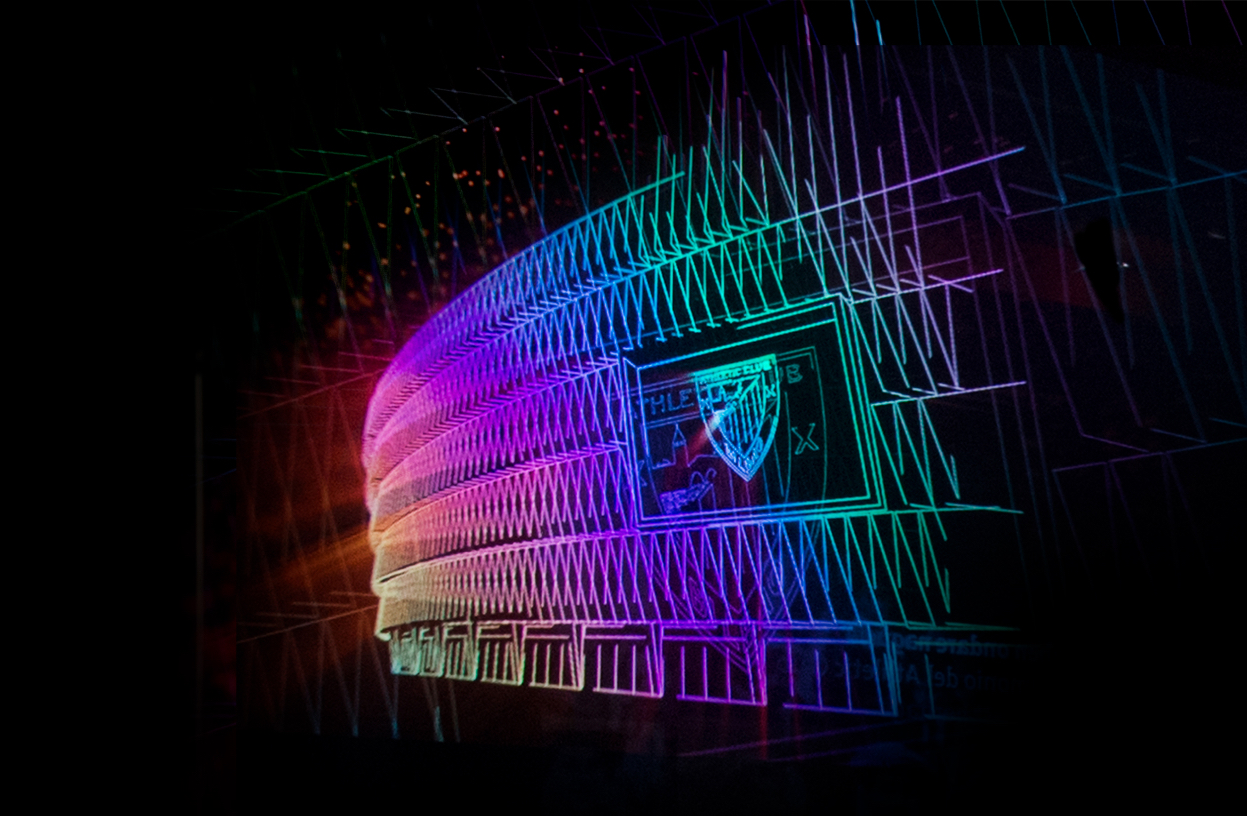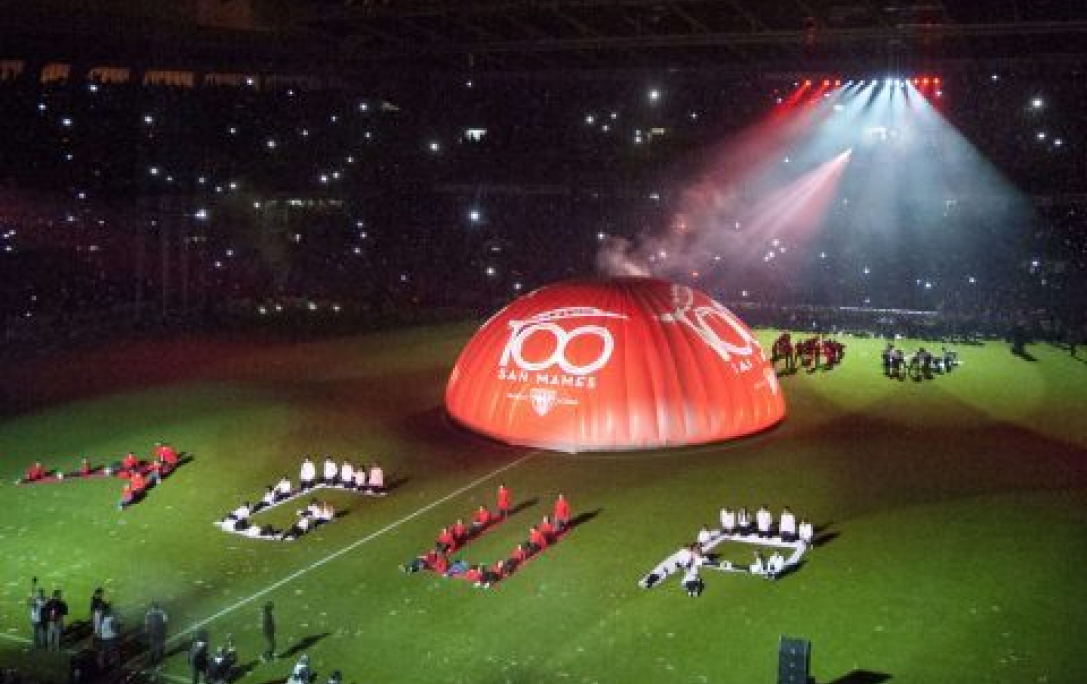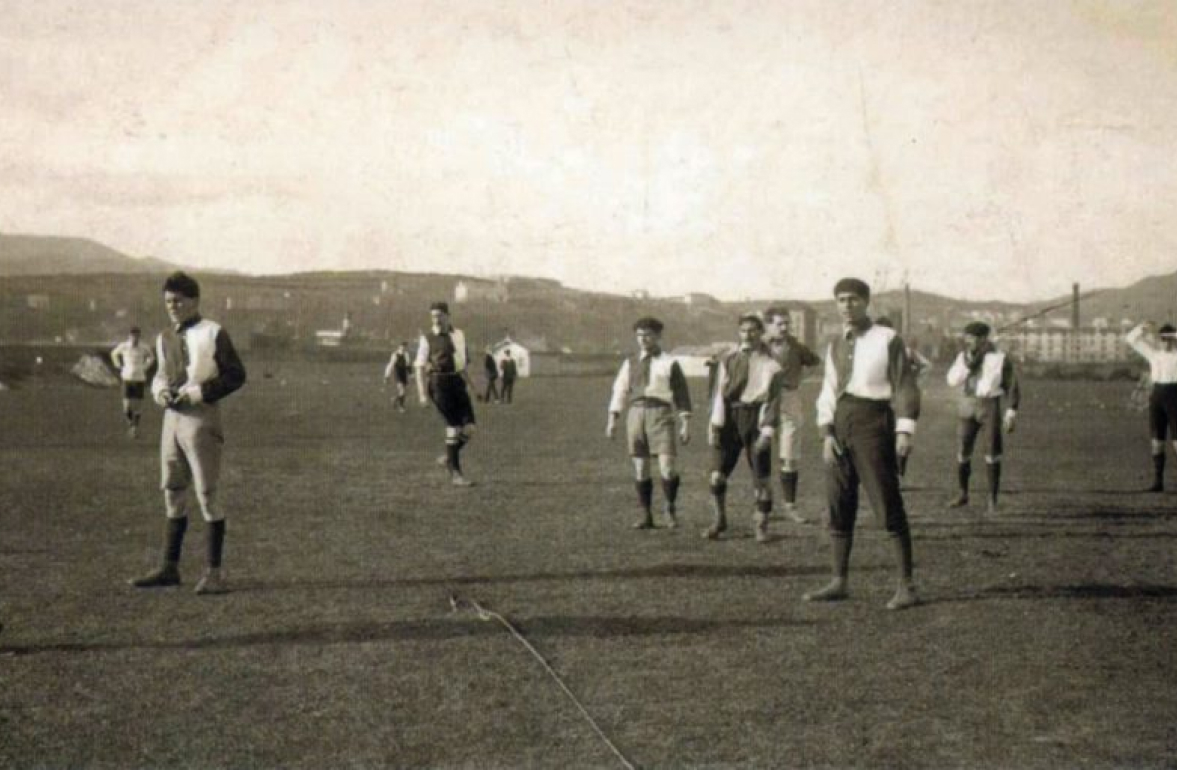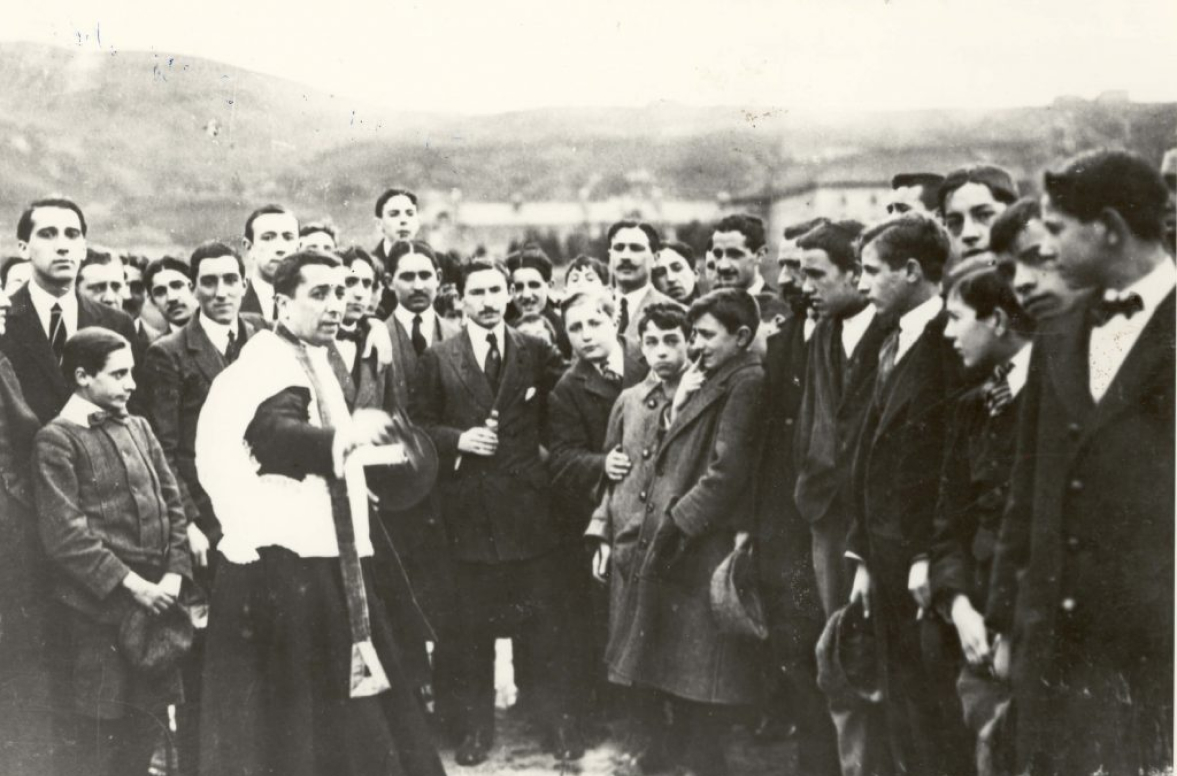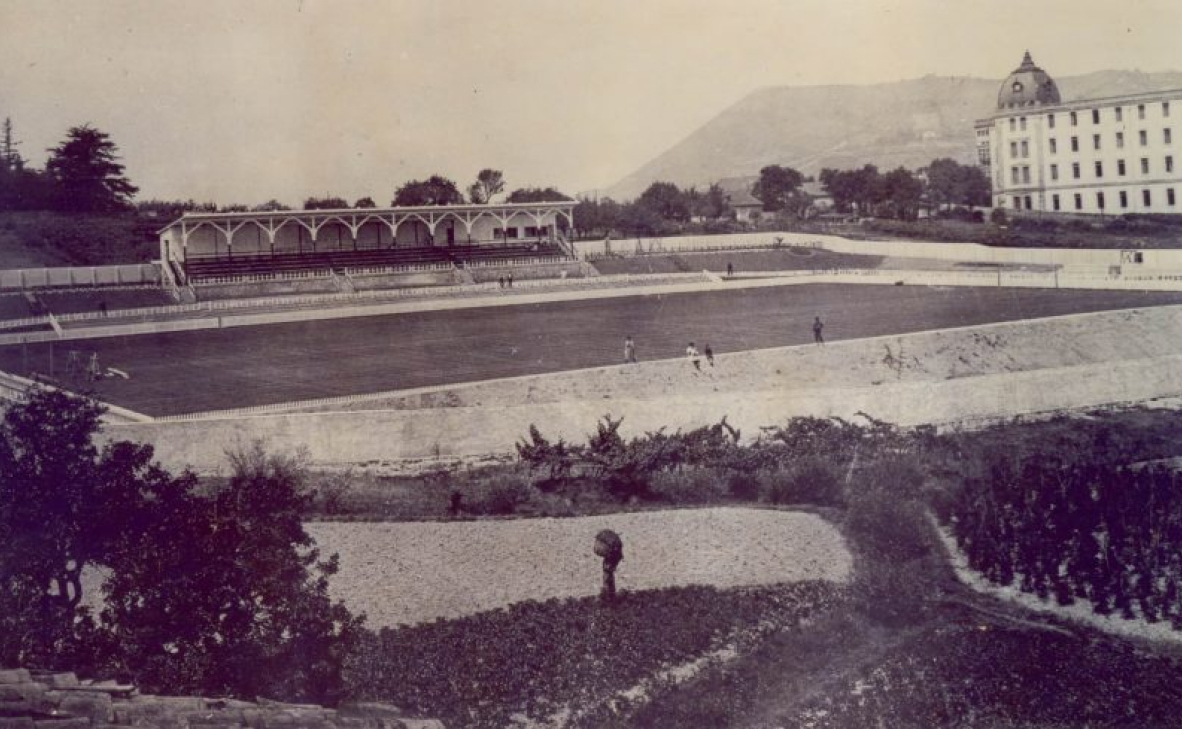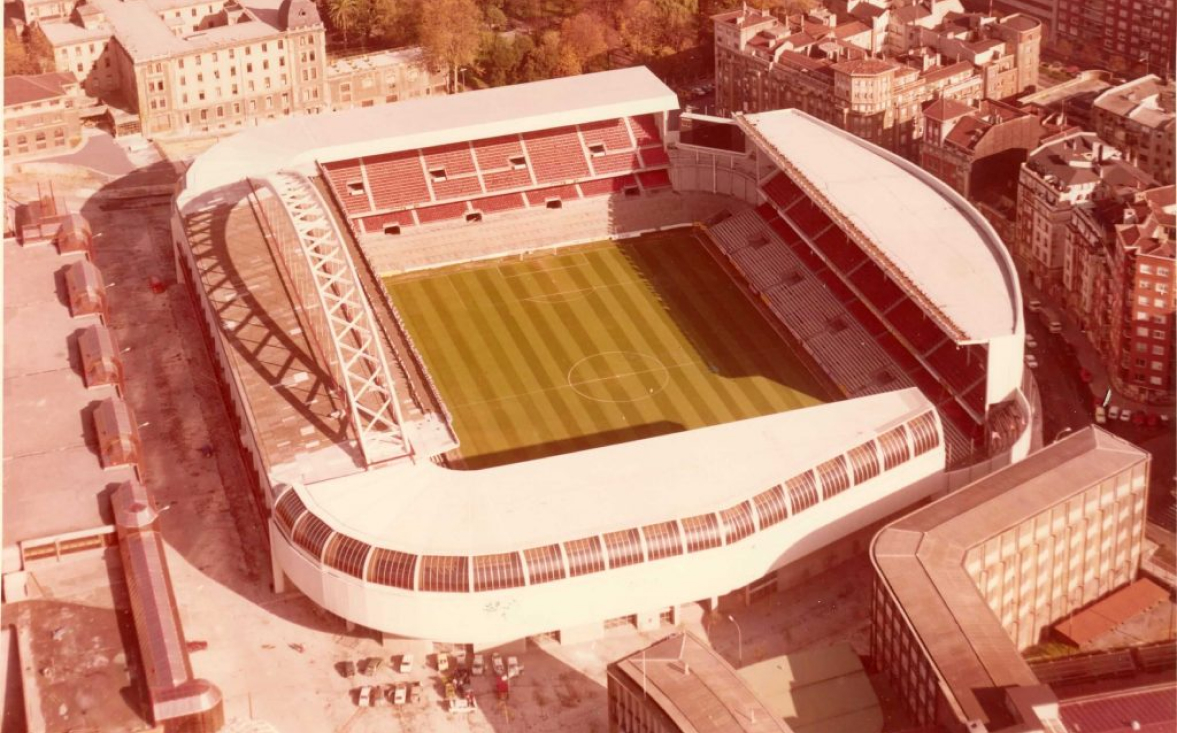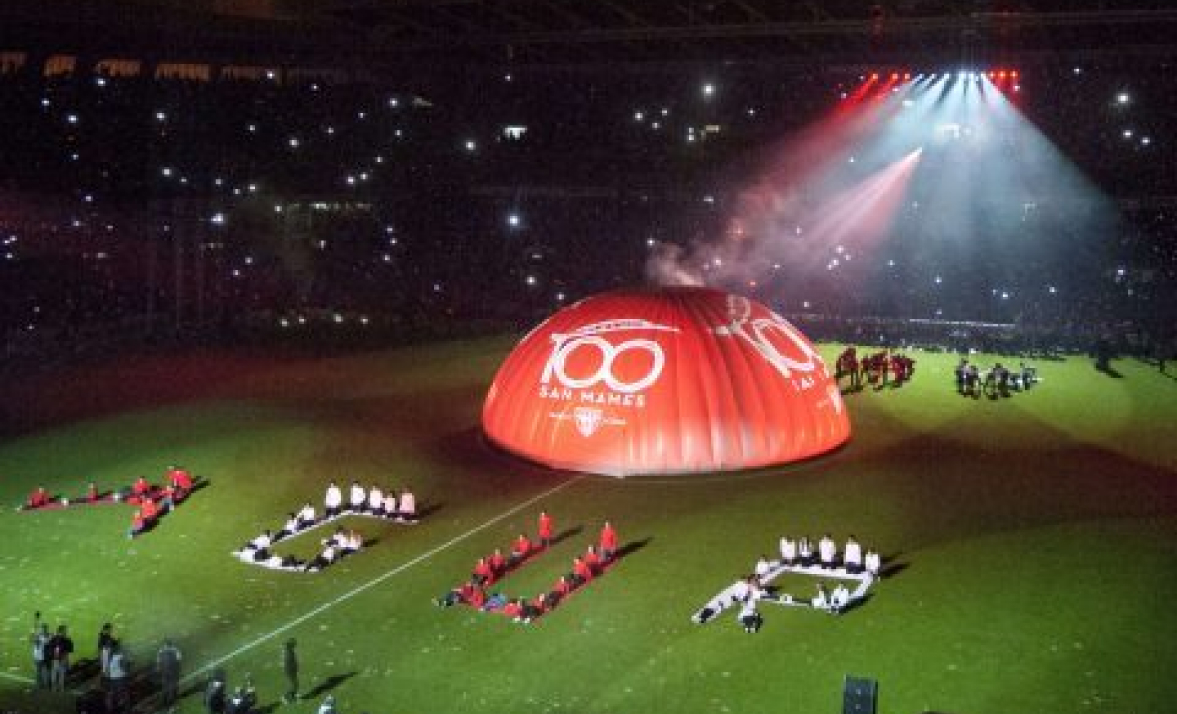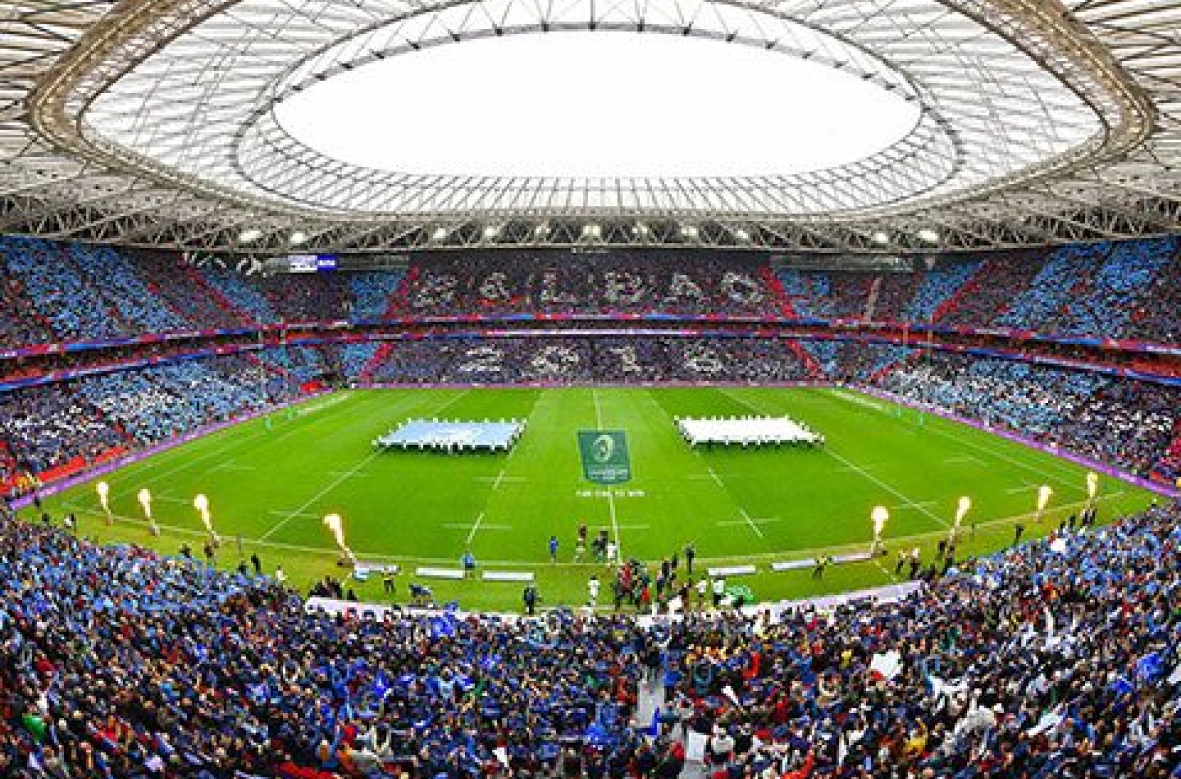Unique architecture in the centre of Bilbao
San Mamés has an instantly recognisable façade that is semi-transparent and permeable, constituting an architectural feature that is remarkable for its originality and reinforces the links with the city and its surrounding area.
Furthermore, the new San Mamés continues to maintain the same allure as the previous ground. The pressure of the crowd and the fantastic atmosphere on matchdays are the stadium’s hallmarks, which everyone refers to as “The Catedral of Football”.
Interior design with essence
The ground’s interior design reflects the essence of the old San Mamés through the presence of unique features related to the history of both the Club and Bilbao itself.
The pitch is still the original size (105 x 68 metres), and it upholds the minimum statutory distance between the stand and the playing field, while still generating the “cauldron effect” that was also a feature of the former ground. Furthermore, the pitch is 7.8 metres below the surrounding ground-level, with the intention of lowering the overall height of the stadium and providing obstacle-free access to the lower stands. The terraces themselves have been built with the steepest gradient within parameters of comfort in order to bring the crowd closer to the pitch.
A model of sustainability
The stadium has been built bearing in mind certain values such as sustainability. This has made it the first football ground in Europe to obtain the LEED (Leadership in Energy and Environmental Design) sustainable building certificate.
This recognition assesses a building’s degree of sustainability based on numerous criteria, such as the impact on the surrounding area, energy and water saving, the use of low-impact materials, innovation and design.
Lighting
The lighting on the façade of the San Mamés stadium constitutes one of its defining features, with a dynamic LED system that permits changing its white plastic ETFE panels into any other colour or arrangement.
La iluminación de la fachada de San Mamés es, sin duda, una de las señas de identidad del campo. Se puede The light show on San Mamés can be enjoyed daily from 10 pm to 10.30 pm in summer, and from 8 pm to 8.30 pm in winter, and it is visible from different parts of the city.
